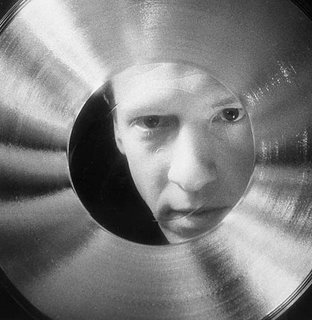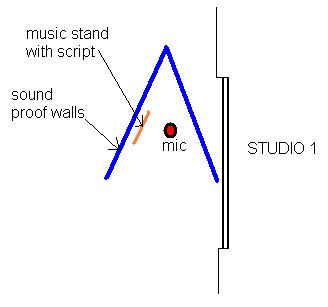Week 12
- Practical 1 - Audio Arts - Marketing [1]
David told us that if we want to sell out soul, ahem, music, to a record label, it's a good idea to present yourself differently so your cd dosn't get thrown into the pile of generic CD's.
- Practical 2 - Creative Computing - Supercollider (5) [2]
- Music Technology Forum - Presentation - Squawk Box: An Open Presentation Session [3]
Presenters were Vinny Bhagat, Patrick McCartney, and Myself.
Vinny started the ball rolling by playing a piece he started to write for a female in the jazz department. Trying to flatter her with a song written exclusively for her, he was harshly rejected after she refused to sing her part in the piece for him as it wasn’t her ‘style’. I give my heart to Vinny for trying. Anyway it was quite a nice piece of music, although I thought the gong (or was it a cymbal?) loop that played throughout became a bit unnecessary.
Next up was Patrick presenting his idea for conducting a monthly composition workshop in the Mawson Lakes Planetarium in the dark. I could imagine this being a lot of fun. I have already signed up to the related blog. Hopefully it will all work out.
Finally I finished the session overtime with some pieces of music I wanted to present. I was a little disappointed that I left the CD with Jonathan Gage’s “Into Violet” at home, but you can download the song here. It’s my hope people got something out of Ryoji Ikeda’s music from Dataplex. Judging from the verbal and written response, this seemed to be the case. This presentation was a good learning experience. It really emphasised the importance of presenting correct information. I'm sure if I spent a little extra time acquiring more facts about the composers, it would have made a difference.
- Music Technology Forum - Workshop - Workshop on Nobukazu Takemura, Gutbucket, Toby Twining, Arnold Dreyblatt, Otomo Yoshihide, and Igor Stravinsky [4]
It was an enjoyable listen. The strings in the background were nice, and the organ sounding loop reminded me of Reich.
Gutbucket – “Snarling Wrath of Angry Goop” from Humping the American Dream
First of all, I like the meaningful song and Album names. The piece was in the style of progressive rock and included this crazy (good) sax solo. Very skilled musicians, but I'm not really into this type of music right now.
J.S Bach – “Ricercar a 6” from The Musical Offering
I thought this piece was monotonous, but that’s only because I don’t fully understand his music. Listening to this piece however only built upon the curiosity established from Stephen’s teaching of Bach in “Music In Context II”. I must learn more about this genius of a composer.
Toby Twining – “Kyrie”
This was a nice piece. I really enjoyed the part with the fluttery notes and sustain the background. At one point it sounded as though a solo was being played with harmonics only.
Arnold Drayblatt – “Lapse”
The piece sounded like it was created through pieces of junk, and of course this reminded me of pieces created with Milkcrate. The tuning for this piece was based on the tones of the harmonic series and contains some string harmonics.
Otomo Yoshihide w/ John Zorn – “Hardcore Chinese Opera”
It was an interesting piece of music, although I was somewhat expecting it to go for longer.
Igor Stravinsky – “Symphonies of Wind Instruments”
This piece makes use of the ‘block technique’ which is basically taking musical ideas that are unrelated, and combining them. I liked this piece. It reminded me of the orchestration from old Disney cartoon shows.
Pfft, like I can summarise all these pieces in 125 words without going any deeper than, “It was good/bad” for each piece. Well I say stuff this 500 word limit, how am I suppose to take pride in writing crappy prose? Succinct I like, but not if it means writing boring prose that’s not even worth reading. Please, someone show me a succinct and interesting summary of this workshop in 125 words (to leave word space for the other three classes). If I can see that this can be done, then perhaps I’ll think differently.









